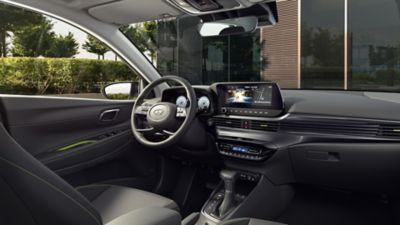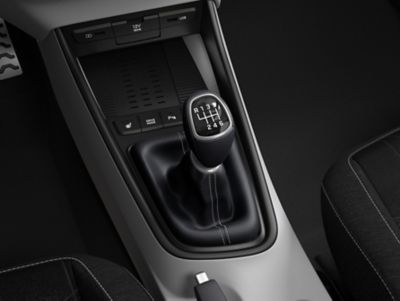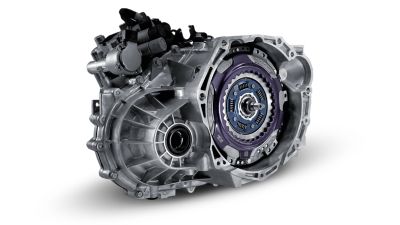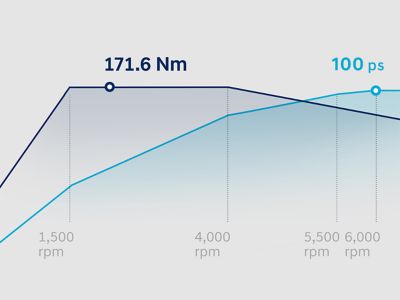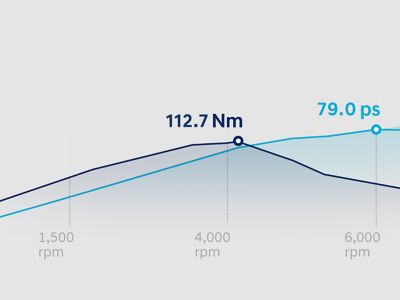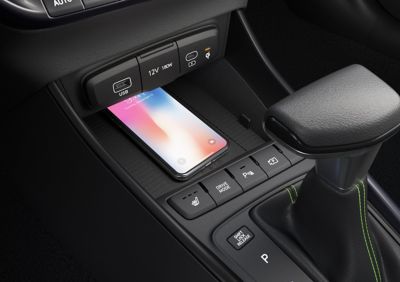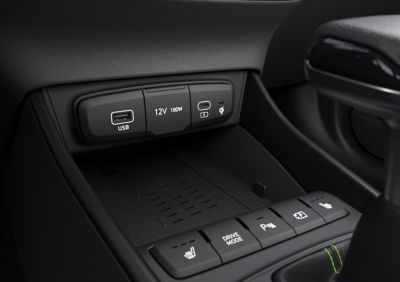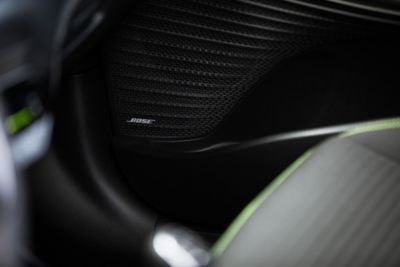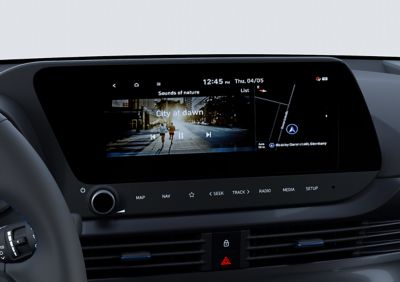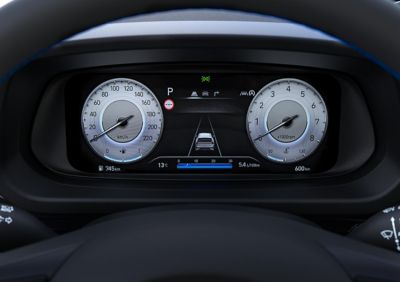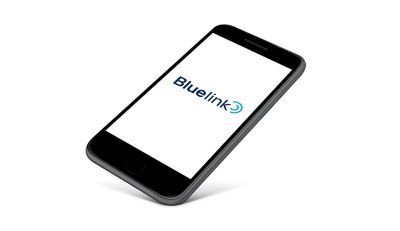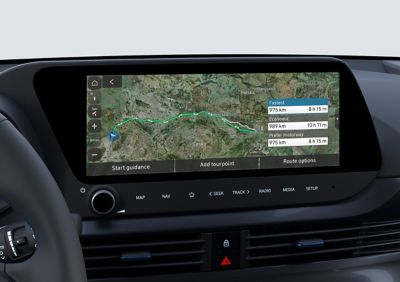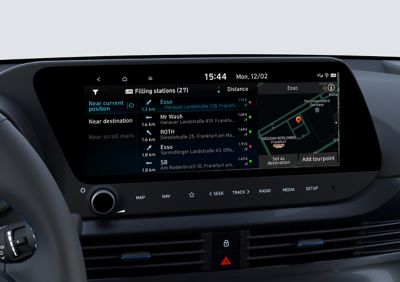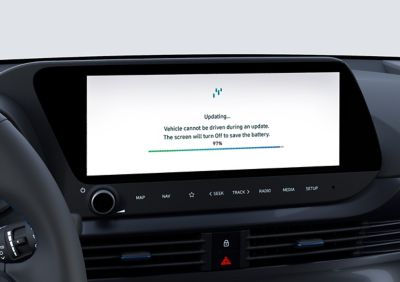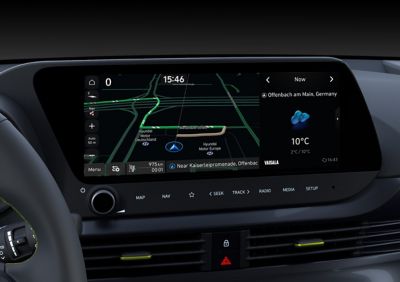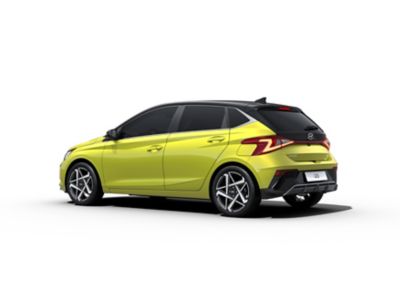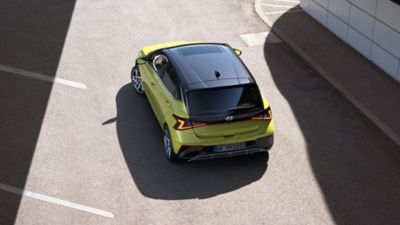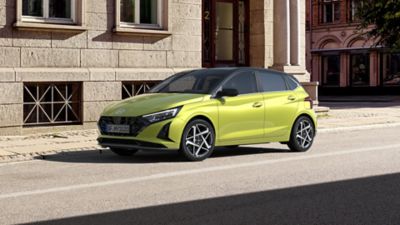Top-of-the-line features for unbeatable fun.
The i20 comes with top-of-the-line features in every major category: State-of-the-art efficiency and performance go hand in hand with a level of convenience that makes this car a true standout in its segment.

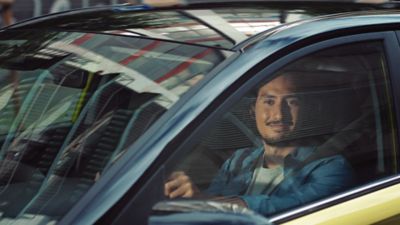
Performance
More powertrain choices. More efficiency.
The i20 can be equipped with several powertrain options, all designed for maximum efficiency and performance. At the top of the range, the 100 PS 1.0 T-GDi petrol engine is also available with 48-volt mild hybrid technology.
Energy Regeneration System (ERS).
Idle Stop & Go (ISG), Alternator Management System (AMS) and low rolling resistance tyres are complemented by our Energy Regeneration System (ERS) in the 48V mild hybrid powertrain. When the car is moving in gear but with a closed throttle, the braking effect of the engine generates kinetic energy that is converted into electricity and stored in the battery. This reduces both fuel consumption and exhaust emissions.
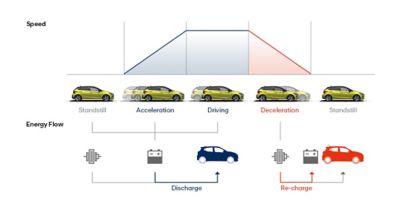
Convenience
Premium sound system and full wireless connectivity.
When it comes to convenience, i20 has got you covered. Apple CarPlay™ & Android Auto™ are on board so you can mirror your smartphone apps and music on the big screen. And for hassle free charging, there’s a wireless smartphone charging pad in the centre console. When you just want to turn it up and sing along, the available eight-speaker BOSE® premium sound system makes for more fun and stellar sound.1
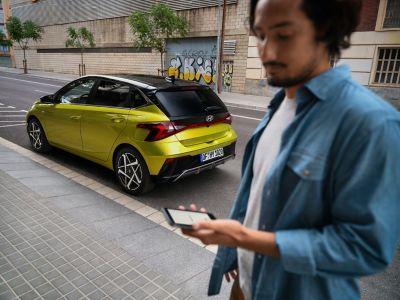
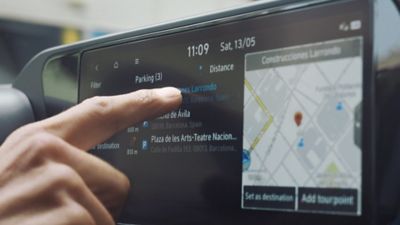
Connectivity
Get connected in style.
Enjoy state-of-the-art smart tech with dual 10.25” visually combined big screens with split-screen functionality. And with Bluelink Connected Car Services, you can control your car from your smartphone – or with your voice. It brings seamless connectivity directly into the i20 with online voice recognition and features to make your drive more convenient and enjoyable.
Enjoy state-of-the-art connectivity services.
Control your car from your smartphone – or with your voice. The latest Bluelink upgrade lets you take full advantage of our state-of-the-art Connected Car Services. On top of the many clever features you can control with the Bluelink app, the new Bluelink scheme comes with a free ten-year subscription for Bluelink Lite and an one-year free trial for Bluelink Pro (all inclusive) package.
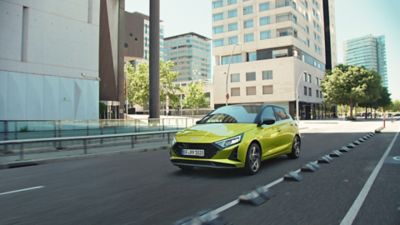

Safety
Most comprehensive safety package.
With Hyundai Smart Sense, our cutting-edge Advanced Driver Assistance Systems, the i20 offers the most comprehensive active safety technology packages in its class – built to provide you with more safety and peace of mind. Many of the features available would not be expected to found in cars of this segment.
